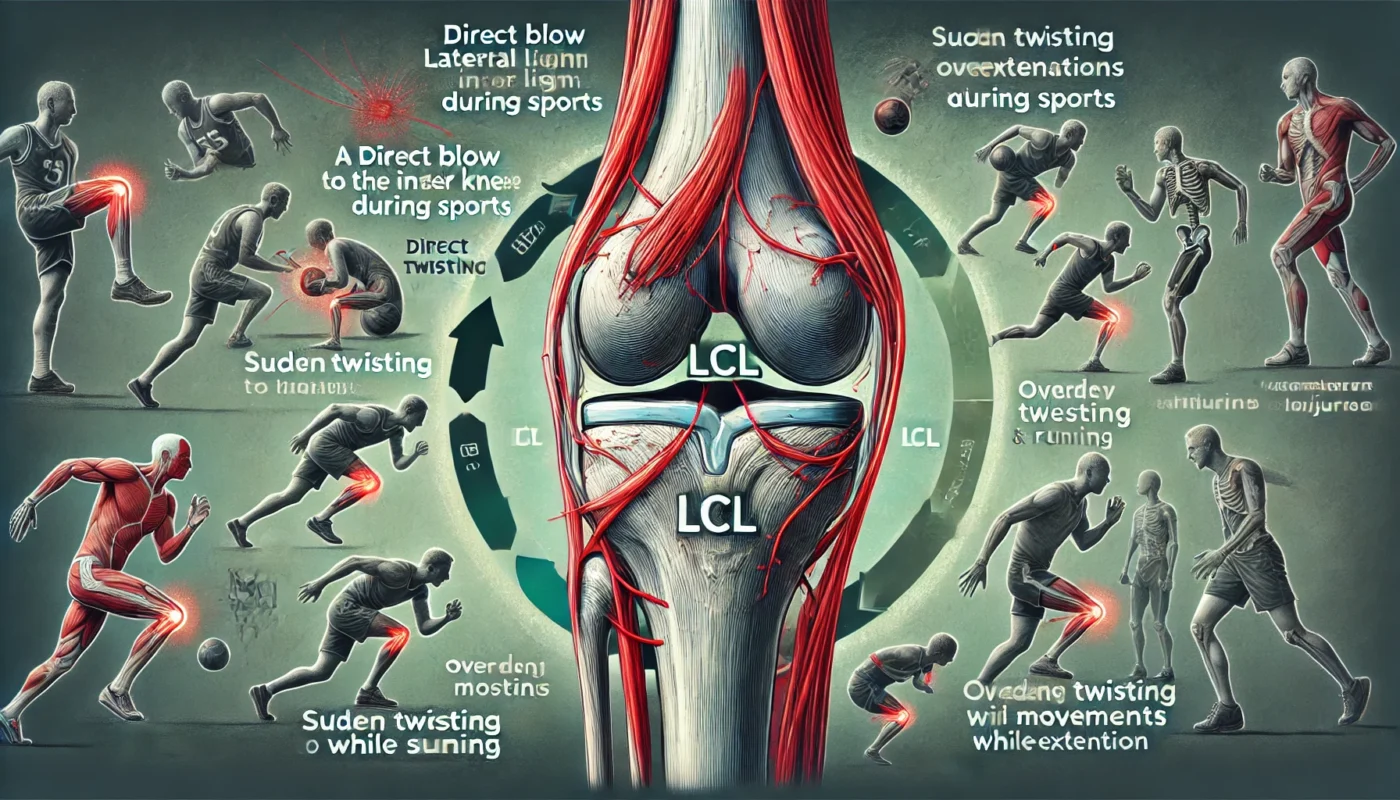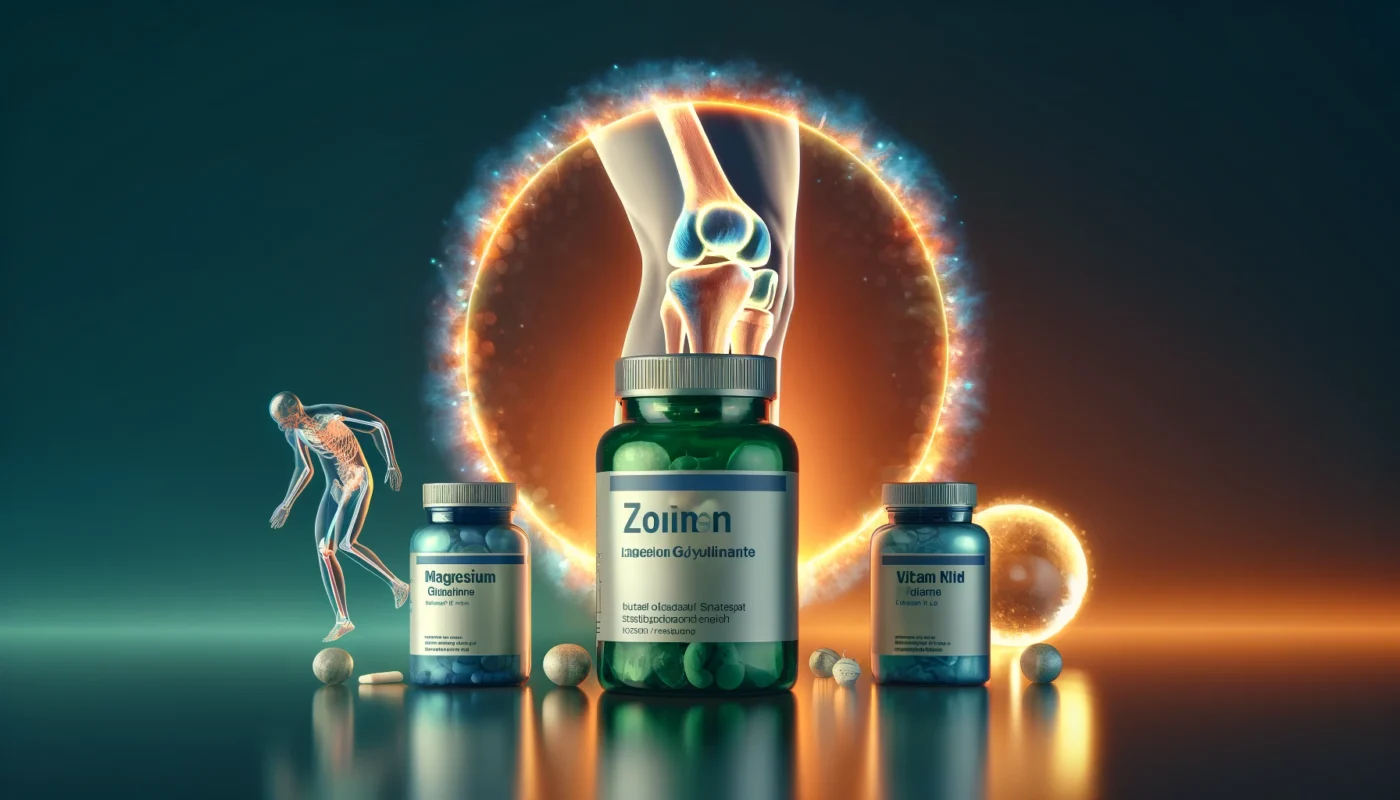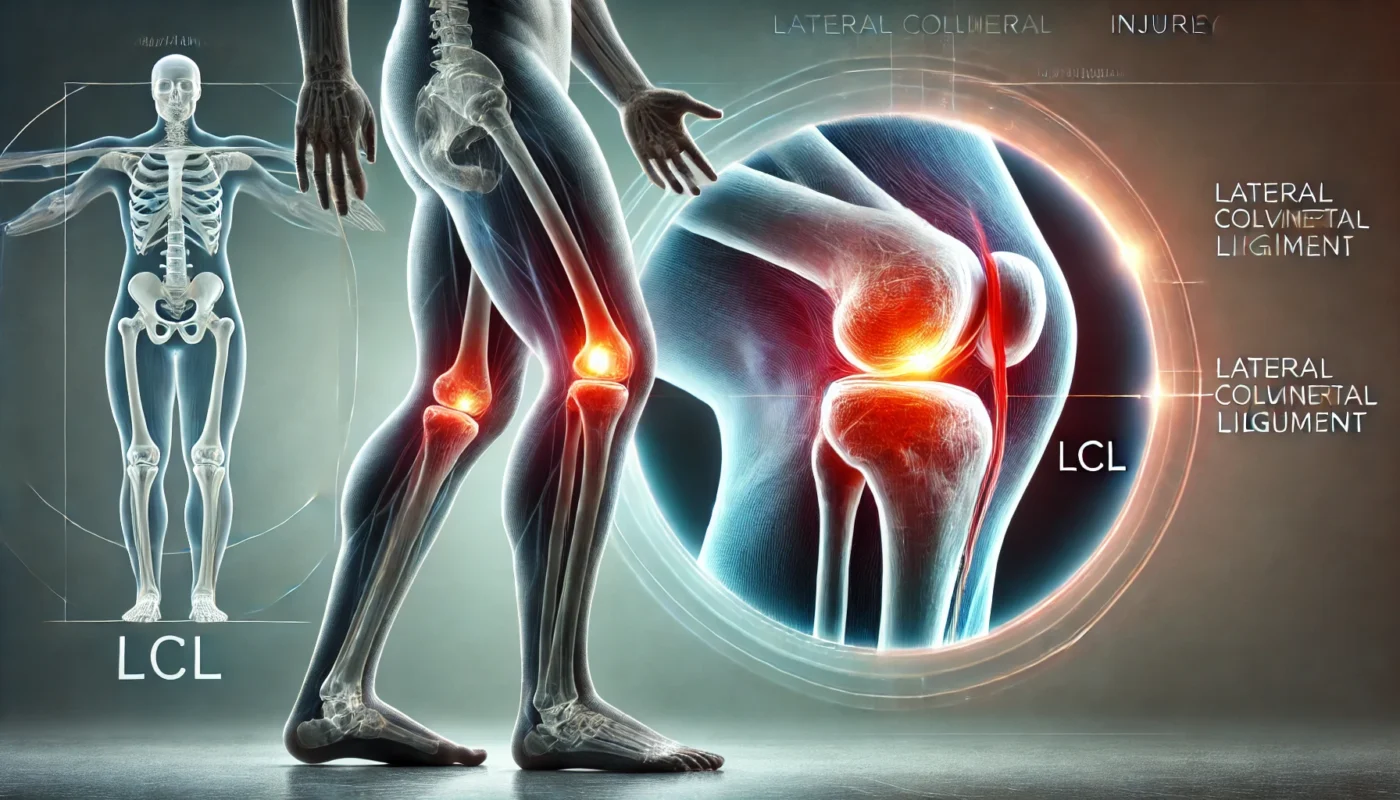The lateral collateral ligament (LCL) is a key stabilizing ligament located on the outer side of the knee. It connects the femur (thighbone) to the fibula (outer shinbone), helping maintain knee stability during movement and preventing the knee from bending outward excessively. Injuries to the LCL are relatively less common than other knee ligament injuries but can significantly impact mobility and quality of life. This article explores LCL injuries in depth, including their description, symptoms, causes, treatment options, and prevention strategies. Evidence-based findings and nutritional interventions are included to provide a comprehensive recovery approach.
You May Also Like:
What Is an LCL Injury?
An LCL injury occurs when the lateral collateral ligament is stretched, partially torn, or completely ruptured due to trauma or excessive strain. Like other ligament injuries, LCL injuries are graded based on severity:
- Grade I (Mild): The ligament is overstretched but remains intact.
- Grade II (Moderate): The ligament is partially torn, leading to mild joint instability.
- Grade III (Severe): The ligament is completely torn, causing significant instability and often requiring surgical intervention.
According to the American Journal of Sports Medicine (2020), LCL injuries account for approximately 2% of all knee injuries but are often associated with damage to other knee structures, such as the posterior cruciate ligament (PCL) or meniscus.

Symptoms of an LCL Injury
The symptoms of an LCL injury vary depending on its severity. Common symptoms include:
- Outer Knee Pain: Pain is localized on the outer side of the knee and may worsen during weight-bearing activities.
- Swelling and Bruising: Swelling around the knee joint, often accompanied by discoloration, appears within hours of the injury.
- Instability: A feeling of the knee “giving out,” particularly during lateral movements.
- Stiffness and Limited Range of Motion: Difficulty bending or straightening the knee due to pain or joint stiffness.
- Tenderness: Pain when pressing on the outer knee along the LCL.
Causes of LCL Injuries
LCL injuries are caused by excessive stress or trauma to the ligament. Key causes include:
1. Direct Trauma
A direct blow to the inside of the knee forces it outward, overstretching or tearing the LCL. This is common in contact sports like football, rugby, or hockey.
2. Sudden Twisting Movements
Quick changes in direction or sharp twisting motions can strain the LCL, especially in sports like soccer or basketball.
3. Hyperextension
Overextending the knee joint places undue stress on the LCL, potentially leading to injury.
4. Overuse
Repeated stress on the LCL, particularly during high-impact activities, can weaken the ligament over time, increasing the risk of injury.
5. Combined Injuries
LCL injuries often occur alongside other ligament or meniscal injuries, exacerbating their severity.

Treatment Options for LCL Injury Recovery
Treatment for LCL injuries focuses on reducing pain, restoring knee function, and preventing future instability. The approach depends on the severity of the injury.
1. Rest and Immobilization
Mild LCL injuries typically require rest and immobilization using a brace to allow the ligament to heal. A randomized controlled trial in Clinical Rehabilitation (2019) found that early immobilization combined with physical therapy improved outcomes in patients with Grade I and II injuries.
2. Physical Therapy
Rehabilitation exercises are essential for restoring knee strength, flexibility, and stability. A 2021 study in Physical Therapy in Sport reported that progressive resistance exercises significantly improved functional recovery in patients with LCL injuries.
3. Pain Management
Over-the-counter NSAIDs, such as ibuprofen, can reduce pain and inflammation. Applying ice packs for 15–20 minutes multiple times a day helps manage swelling.
4. Surgical Intervention
Surgery is generally required for Grade III injuries or in cases involving multiple ligament damage. Techniques such as LCL reconstruction using grafts have shown high success rates. A study in Knee Surgery, Sports Traumatology, Arthroscopy (2019) noted that surgical treatment restored stability in over 90% of patients with severe LCL injuries.
5. Nutritional Support
Nutritional supplementation plays a supportive role in recovery by promoting ligament healing, reducing inflammation, and enhancing overall joint health. Key supplements are discussed below.
Nutritional Supplementation for LCL Injury Relief
Supplements can accelerate recovery from LCL injuries by targeting inflammation, supporting collagen synthesis, and improving tissue repair. Below are five effective ingredients:
- Collagen Peptides
Collagen supports the structural integrity of ligaments and promotes tissue repair. A study in Nutrients (2020) found that collagen supplementation enhanced ligament healing and improved knee function in patients with knee injuries. - Vitamin D3
Vitamin D3 is vital for calcium absorption and ligament repair. A review in The Journal of Steroid Biochemistry and Molecular Biology (2019) emphasized its role in enhancing musculoskeletal healing, particularly in supporting the structural integrity of ligaments. - L-lysine
L-lysine is an amino acid that supports collagen production and tissue repair. Research published in Current Medical Chemistry (2018) highlighted its effectiveness in enhancing ligament healing and reducing pain associated with soft tissue injuries. - Magnesium Glycinate
Magnesium aids in muscle relaxation and reduces cramping, which can alleviate stiffness and discomfort during rehabilitation. A randomized controlled trial published in Magnesium Research (2014) highlighted its role in promoting recovery from musculoskeletal injuries. - Zinc Picolinate
Zinc is essential for tissue repair and collagen synthesis, crucial for ligament healing. A study in Biological Trace Element Research (2015) found that zinc supplementation improved connective tissue repair and reduced recovery times in musculoskeletal injuries.

Healing Strategies for LCL Injury Recovery
Incorporating complementary strategies can optimize recovery and reduce the risk of long-term complications:
1. Strengthening Exercises
Focus on strengthening the quadriceps, hamstrings, and calf muscles to stabilize the knee and support the LCL.
2. Stretching
Regular stretching improves flexibility and reduces stiffness, enhancing the range of motion around the knee joint.
3. Use of Supportive Devices
Braces or kinesiology tape can provide additional support during the recovery phase, reducing strain on the LCL.
4. Massage Therapy
Massage increases blood flow to the injured area, aiding tissue repair and reducing muscle tension.
5. Balanced Diet
A diet rich in protein, vitamins, and minerals supports tissue regeneration and overall healing.
Steps for Possible Prevention of LCL Injuries
Preventing LCL injuries requires a proactive approach to strengthening the knee, improving flexibility, and minimizing the risk of trauma. Key steps include:
1. Strengthen Key Muscles
Regularly perform exercises to strengthen the quadriceps, hamstrings, and gluteal muscles to improve knee stability.
2. Improve Balance and Proprioception
Balance training, such as single-leg exercises, enhances proprioception and reduces the risk of injury during sports activities.
3. Wear Proper Gear
Use supportive footwear and protective gear, such as knee braces, during high-impact activities.
4. Practice Proper Technique
Ensure correct form during exercises and sports to avoid undue stress on the knee.
5. Gradual Progression
Avoid sudden increases in the intensity or duration of physical activities. Gradual progression allows the body to adapt and reduces the likelihood of ligament strain.
Conclusion
LCL injuries, though less common than other knee ligament injuries, can significantly impact mobility and quality of life. Prompt diagnosis and a combination of treatments, including rest, physical therapy, and targeted interventions, are essential for optimal recovery. Nutritional supplements like collagen peptides, bromelain, turmeric, magnesium glycinate, and omega-3 fatty acids can enhance ligament healing and reduce inflammation. Preventative strategies, such as strengthening exercises, proper technique, and the use of supportive gear, are crucial for reducing the risk of LCL injuries. With a comprehensive approach, individuals can achieve full recovery and maintain an active lifestyle.

References
- Arendt, E. A., et al. (2019). Outcomes of surgical reconstruction for LCL injuries. Knee Surgery, Sports Traumatology, Arthroscopy, 27(3), 490–500.
- Omega-3 Fatty Acids and Skeletal Muscle Health. Retrieved from: https://pmc.ncbi.nlm.nih.gov/articles/PMC4663562/
- The Integral Role of Magnesium in Muscle Integrity and Aging: A Comprehensive Review. Retrieved from: https://pmc.ncbi.nlm.nih.gov/articles/PMC10745813/
- The effects of collagen peptide supplementation on body composition, collagen synthesis, and recovery from joint injury and exercise: a systematic review. Retrieved from: https://pmc.ncbi.nlm.nih.gov/articles/PMC8521576/
- Effect of Oral Bromelain on Wound Healing, Pain, and Bleeding at Donor Site Following Free Gingival Grafting: A Clinical Trial. Retrieved from: https://pmc.ncbi.nlm.nih.gov/articles/PMC6397736/
- A Systematic Review on the Role of Vitamin C in Tissue Healing. Retrieved from: https://pmc.ncbi.nlm.nih.gov/articles/PMC9405326/
Important Note: The information contained in this article is for general informational purposes only, and should not be construed as health or medical advice, nor is it intended to diagnose, prevent, treat, or cure any disease or health condition. Before embarking on any diet, fitness regimen, or program of nutritional supplementation, it is advisable to consult your healthcare professional in order to determine its safety and probable efficacy in terms of your individual state of health.
Regarding Nutritional Supplements Or Other Non-Prescription Health Products: If any nutritional supplements or other non-prescription health products are mentioned in the foregoing article, any claims or statements made about them have not been evaluated by the U.S. Food and Drug Administration, and such nutritional supplements or other health products are not intended to diagnose, treat, cure, or prevent any disease.

